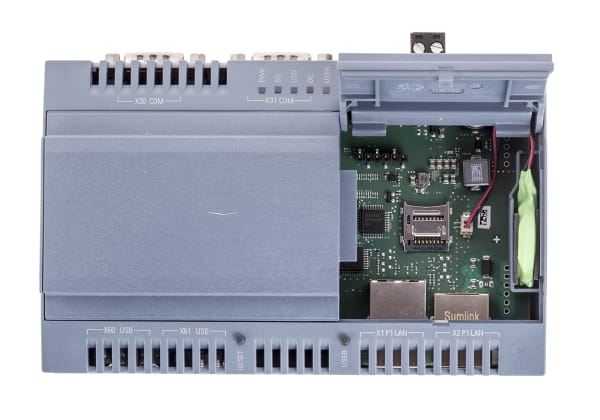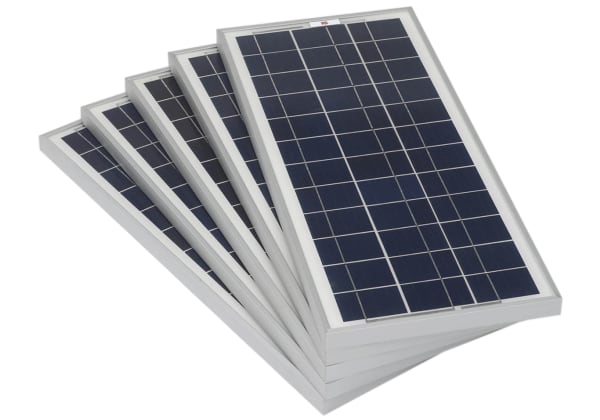- Published 24 Jan 2023
- Last Modified 29 Aug 2023
- 5 min
What are the Advantages of IoT?
The IoT has revolutionised maintenance and manufacturing. This guide explores the advantages and benefits of IoT.

Published March 2022
The IoT (Internet of Things) is revolutionising industry by transforming manufacturing, maintenance, and technology. By connecting machines, systems, equipment, and production lines, the IoT offers a unique potential to collect data. This allows for the development of predictive maintenance, monitoring of industrial assets, and the digital transformation of production sites with Industry 4.0.
But are these connected systems mirages or miracles? Join us as we explore the benefits of IoT in this guide.
Understanding How the IoT Works
Whether it's pressure, temperature, vibration, time of use, or the number of cycles, there is a type of sensor for every possible use. For effective monitoring and achieving an intelligent, efficient connected system, it's important to understand how the IoT works.
Components of an IoT System
An IoT system consists of several components. These are:
- Connected devices - either natively or by adding sensors to collect operating data
- Wireless communication networks
- A data collection and hosting platform
- Tools, platforms, or software capable of processing the data
- Applications or services to view and interact with the connected system
Communication Networks
Data transmission plays a central role in making sensor networks communicate in an intelligent ecosystem. For this, it's important to take a closer look at the Low Power Wide Area Network (LPWAN).

Did You Know?
An LPWAN is a type of wireless telecommunications network. It enables long-range communications with low bit rates, interconnecting low-bandwidth devices such as battery-operated sensors.
LPWANs are typically used for low-power IoT applications due to their low power usage, good building penetration, and capability for communication over long distances. There are four main types of LPWAN, each with unique advantages and disadvantages in terms of range, signal strength, power consumption, and frequency of data transmitted.
The main types are:
- NB-IoT: NarrowBand Internet of Things is a global standard that can send brief information over long distances. It connects fixed or moving devices that can send data at regular intervals, such as humidity levels or monthly electricity usage, for example
- LTE-M: Long-Term Evolution for Machines uses the existing 4G network but only retains what is strictly necessary for the communication of internet-connected devices. It makes the exchange of larger volumes of data possible, in return for higher energy consumption
- Sigfox: Sigfox is a French connectivity technology that works with a long-range signal, but only with devices that are continuously on and emit very small volumes of data
- LoRa: LoRa is based on spread-spectrum modulation techniques and is supported by the LoRa Alliance. It relies on interoperability and allows devices and sensors to connect to any type of network
Depending on your business and your technical infrastructure, it is important to collect the right data via the right network in order to optimise your predictive maintenance. For example, are pressure sensors that collect data every two weeks sufficient, or do you need a stricter protocol with real-time readings every hour? Depending on your requirements, the collected data must be integrated into IoT solutions for intelligent traceability and analytics.

The Benefits of IoT
The IoT represents a technological shift in industry that facilitates automation for predictive industrial solutions.
IoT advantages include:
- Improving efficiency and enabling you to make smarter, more informed decisions
- Reducing maintenance costs by replacing unnecessary maintenance with more efficient, personalised predictive maintenance
- Optimising processes with better communication and remotely controlling operations to identify risks, inefficiencies and possible bottlenecks
- Limiting inventory costs with automated inventory management, reducing human error and facilitating logistics operations
- Anticipating maintenance requirements on production lines and significantly reducing the risk of sudden breakdown or equipment failure
- Monitoring the efficiency and productivity of supply chains, equipment, devices, and systems
- Providing a competitive advantage by facilitating data-driven decisions and enabling new or optimised business models
Disadvantages of IoT
Despite the significant advantages outlined above, IoT technology must also overcome certain drawbacks and challenges - and it's important to be aware of these. For the IoT, the main concerns revolve around issues related to data security and the challenges of cyberattacks. After all, from the moment a device is connected, it has the potential to become the source of a cyberattack.
Therefore, it is essential to implement strict IoT security protocols to prevent unauthorised access to highly sensitive data on the operation of your industrial site or system. Security, backup, audits, and regular monitoring are the best defences.
Integrating IoT into industrial systems can transform a business from within. By making decisions based on reliable, regularly-collected data, you can save valuable time day-to-day to efficiently manage maintenance and adjust, optimise, and reorganise equipment or production lines.
Key Products
Development Kits
Microcontroller development kits offer a compact solution for condition monitoring and predictive maintenance.
Vibration Meters
Bearing defender vibration meters are designed to monitor bearings and provide valuable IoT data to operators.
IoT Gateways
Intelligent technology-enabled IoT gateways can turn your data into a business advantage.
Industrial Computers
Industrial computers are ideal for process control and data acquisition within an interconnected system.
Related Guides
Related links
- An Introductory Guide to the IIoT
- Why the Internet of Things will be the next economic revolution
- What futuristic tech will you see in your life time?
- The Industrial IoT and Smart Factories
- The future of industry 4.0
- The Industrial Internet of Things – what can it do for your business?
- Keysight Technologies Oscilloscope Software for Use with Internet of things
- A Complete Guide to Magnetic Tape





